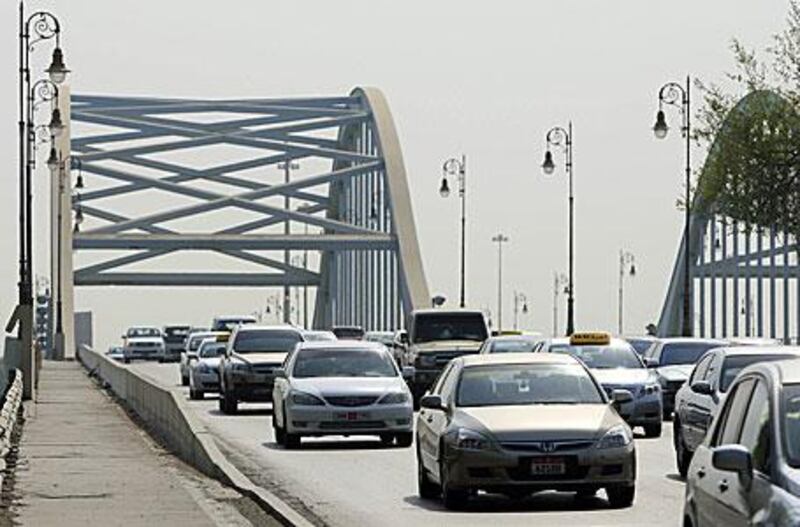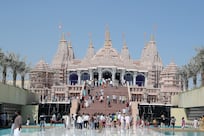ABU DHABI // Barriers meant to make the roads safer that could in fact launch a car into the air, and directional signs that are confusing or hard to read at night were among safety issues highlighted yesterday by experts hired by the Government.
The road safety auditors, both from UK-based companies, are working for the Department of Transport, (DoT) which has launched the audit as part of a major initiative to improve road safety in the emirate. By November 5, James Bedingfeld, a traffic engineer with the Transport Research Laboratory, and Mark Hedley, an engineer with WSP Development and Transportation, will have travelled more than 4,500km of the emirate's motorways armed with a camcorder, noting issues that create the potential for crashes or that might make accidents more severe.
"Safety barrier terminals on all the routes is probably the biggest common feature," Mr Hedley said. "I think in roads like this, signing is near enough up there as high priority. Signing is what the driver sees. If a driver doesn't know where they are going it leads to inappropriate driver behaviour." A driver crossing the Maqta Bridge in the direction of Dubai, for instance, could find it difficult to move into the correct exit lane after spotting the sole road sign pointing the way. A more advanced warning was needed, Mr Hedley said. Larger lettering was also necessary.
Crash barriers placed alongside some motorways to keep vehicles from running down embankments, into a ditch or into a stationary object, could pose a hazard themselves if not designed correctly, the experts said. The barriers did not meet good design standards, with some sloped so that a car hitting the end could find itself airborne. Some were so inflexible that a vehicle might rebound into traffic.
Meanwhile, roadside lighting columns with heavy concrete bases and marker stones could seriously damage a vehicle and increase the severity of injuries for occupants. The consultants will recommend "passive safety" devices, such as crash barriers that cushion impact. They will advocate lighting columns or road signs that either deform or collapse on impact, to improve vehicle occupants' chances of surviving a crash.
"It will reduce the severity of collisions, if you ever came off the carriageway it could maybe save a life," Mr Hedley said. For each site, the auditors will provide the DoT with a photographic reference and its GPS co-ordinates, an outline of the safety concern and a possible strategy to meet it, as well as the risk level and effort needed to remedy the issue. Mr Bedingfeld has been doing much of the driving so far and admits he had missed some turn-offs while driving at night, which he attributed to poor lighting of signs.
"There's a real big traffic signage issue," Mr Hedley added, citing inconsistency, lack of signs or signs that come too late to warn of the hazard. Each road will be checked twice. The men are also looking for problems with pedestrian access, traffic-calming measures, access to and from the motorway network and the merging of traffic. There were no reflective lane markings, which could make visibility poor at night, particularly in rural areas if a lighting fixture had gone out, they said.
Road safety guidelines for the emirate are being developed, which will take into account the experiences of other countries. The department has said it will fix the easiest and most dangerous problems first, and gradually, the other recommendations will be implemented. mchung@thenational.ae






